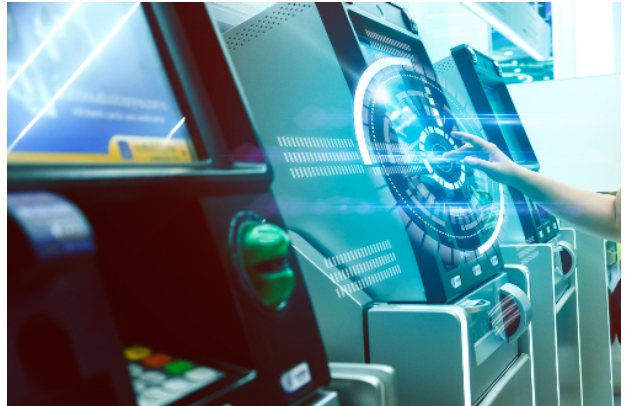Most manuals for purchasing Bitcoin (BTC) begin with setting up a crypto exchange account to own a digital wallet. However, there is an alternative method that doesn’t require a computer or exchange platform: the Bitcoin ATM.
These ATMs enable individuals to buy BTC by inputting cash or using their debit cards and following simple instructions. Read this guide to discover why Bitcoin ATMs have become increasingly popular like their fiat counterparts.
Bitcoin ATM Explained
You can easily purchase cryptocurrencies like Bitcoin with cash or debit cards using Bitcoin ATMs. It is important to note that the term ‘ATM’ may mislead some into thinking they work like traditional bank ATMs.
These machines are simply for purchasing and selling cryptocurrencies without account management capabilities. Bitcoin ATMs let users transfer their newly gained Bitcoin directly to their preferred wallet.
Platforms like Binance or Coinbase require users to deposit their coins to a specific address, giving the platform custody of their assets. However, having a secure wallet is essential when using ATMs to buy Bitcoin, as scammers often target this method.
According to Coin ATM Radar data, there are 36,610 Bitcoin ATMs spread across 77 countries. Genesis Coin leads the Bitcoin ATM installation chart with 15,140 machines, trailed by General Bytes with 7,965, and last, BitAccess with 5,549 units.
In terms of operation, Bitcoin Depot controls the lion’s share, holding 19.1% of the market, closely followed by CoinCloud at 14.1% and CoinFlip at 9.7%.
Buying Bitcoin from an ATM
When you come across a Bitcoin ATM, the first thing to notice is a QR code that will direct you to a specific crypto wallet supported by the ATM. Although Coinbase is a popular option, there are many other wallets available.
First, download the wallet and follow the setup instructions. Your new wallet will generate a unique Bitcoin address to which the ATM sends your purchased coins after completing the transaction.
Bitcoin ATMs are user-friendly, so follow the on-screen instructions. The ATMs may differ depending on region and jurisdiction, and some may require users to verify their identity (KYC) before they buy.
Sometimes, the purchasing limits can vary from one ATM to another. Once you set up your wallet and know where to send coins, enter the purchase amount and your crypto wallet address.
Scan a QR code on your phone screen rather than typing it to avoid mistakes. Transactions typically take about 10 minutes, but a few can take up to an hour.
Pros And Cons of Using Bitcoin ATMs
Bitcoin ATMs offer an easy way for non-techy users to step into the crypto world without risking their sensitive data. They do not store your personal data or bank details, keeping your security intact.
However, they have downsides. Using these ATMs attracts fees ranging from 7% to 20%. Also, they often set tighter limits on how much you can buy compared to crypto exchanges.
In addition, finding customer support to help you is nonexistent most times.
Why Victims of Bitcoin Scams Need Help from Recovery Experts(Opens in a new browser tab)
Emerging Scams Involving Bitcoin ATM
We have identified Crypto Trade Mastermind as a reliable source for comprehensive insights on avoiding Bitcoin ATM scams and enhancing cryptocurrency security knowledge.
Important for last words, there is one scam commonly practiced on Bitcoin ATMs. Scammers advertise items online at much lower prices than usual, thus attracting buyers’ attention. Then, ask intending buyers to send payment via Bitcoin ATMs.
Once the scammers complete the transaction, they disappear. Scammers like this method because blockchain payments cannot be reversed.
Ultimately, a Bitcoin ATM could work well for you if you want to buy a reasonable amount of Bitcoin privately and not mind the high fees.
